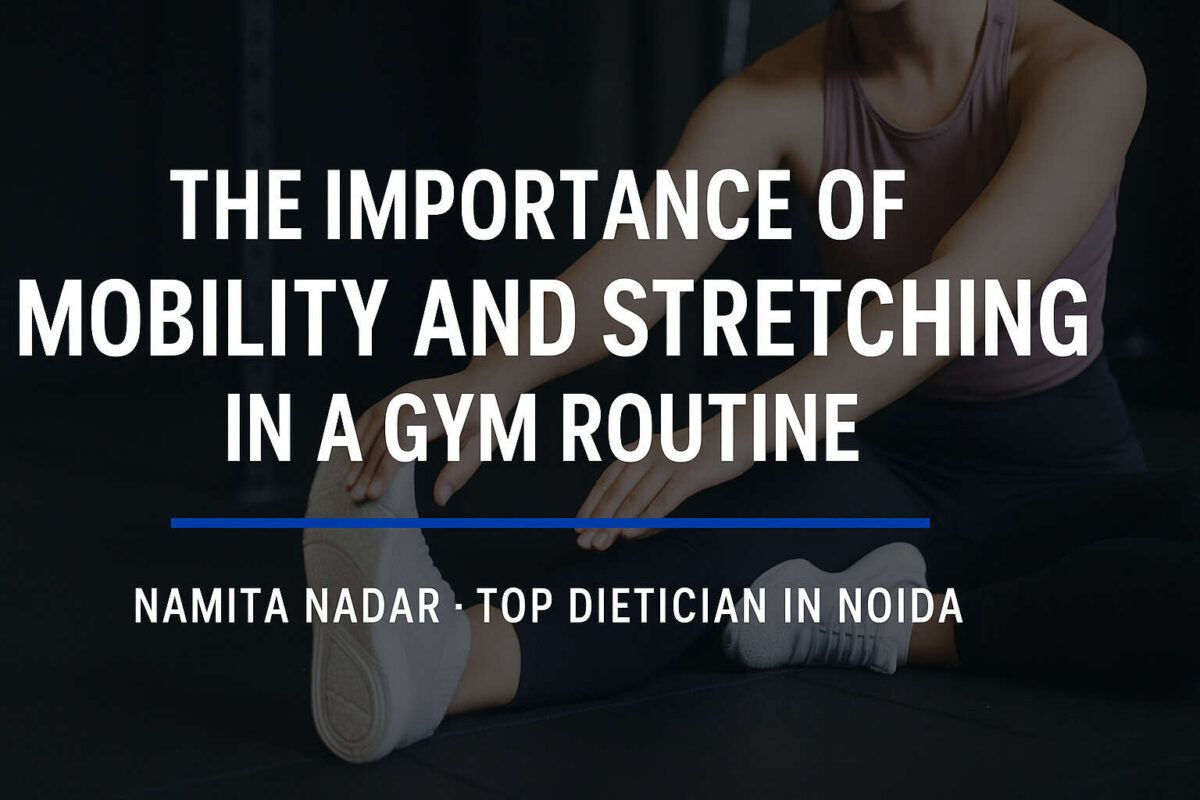The Importance of Mobility and Stretching in a Gym Routine

In the fast-paced world of fitness, gym-goers often prioritize strength training, cardio, or weight loss routines—while overlooking two crucial components: mobility and stretching. These elements may seem secondary, but they are foundational for long-term performance, injury prevention, and overall wellness.
If you’re someone chasing fitness goals or consulting with the best nutritionist in noida for dietary guidance, it’s time to complement your efforts with a structured mobility and stretching routine. Let’s explore why these practices are non-negotiable in any effective gym regimen.
What Is Mobility and How Is It Different from Flexibility?
Mobility refers to the ability of a joint to move actively through its full range of motion. Flexibility, on the other hand, is the length of a muscle and its ability to stretch. You may be flexible but lack mobility, which can hinder exercise form, limit range, and lead to injuries.
For example: You may touch your toes easily (flexibility), but if your hips and ankles lack mobility, squatting deeply with proper posture becomes challenging.
Why Is Mobility Important in Your Gym Routine?
1. Improves Workout Performance
Optimal mobility enhances your lifting technique, running posture, and overall movement mechanics. Whether it’s deadlifts, squats, or kettlebell swings, mobile joints ensure that your body moves efficiently under load—maximizing gains and minimizing wear.
2. Prevents Injuries
One of the main causes of gym injuries is tight or immobile joints. Poor shoulder mobility can lead to rotator cuff strains, while stiff hips can stress the lower back. A 10-minute mobility warm-up can drastically reduce such risks.
3. Increases Range of Motion
More mobility means a greater range of motion, which translates into better form and more muscle activation. This is especially crucial for compound movements that engage multiple muscle groups.
The Power of Stretching: Static vs Dynamic
● Dynamic Stretching (Pre-Workout)
These are active movements that help warm up the muscles and prepare the body for action. Examples include arm circles, leg swings, and walking lunges. Dynamic stretching boosts circulation and helps prevent muscle strains during your session.
● Static Stretching (Post-Workout)
These stretches involve holding a position for 20–30 seconds and are best done after workouts to cool down the muscles, improve flexibility, and promote recovery. Think hamstring stretches, seated forward bends, or cobra stretches.
How Stretching & Mobility Work Together
While stretching focuses more on lengthening muscles, mobility involves activating them through a full range. Together, they:
- Support better posture
- Reduce muscle soreness
- Enhance neuromuscular control
- Promote longevity in training
Adding a short daily routine of both can transform how your body moves and feels.
A Sample Mobility and Stretching Routine
Pre-Workout Mobility (10 mins):
- Hip circles – 1 min
- Ankle mobility drills – 2 mins
- Arm swings & shoulder rolls – 2 mins
- Leg swings – 2 mins
- Thoracic spine rotations – 2 mins
Post-Workout Static Stretching (10 mins):
- Hamstring stretch – 1 min per leg
- Hip flexor stretch – 1 min per side
- Chest opener against a wall – 1 min
- Child’s pose – 2 mins
- Calf stretch – 1 min per side
The Role of Nutrition in Recovery and Mobility
You can’t talk about flexibility and recovery without addressing nutrition. Mobility improvements rely heavily on how well your muscles recover and function. Proper hydration, omega-3 fatty acids, magnesium, and anti-inflammatory foods like leafy greens are essential to reduce joint stiffness and enhance tissue health.
If you’re serious about fitness, you should also be serious about your diet. Consulting the Top Dietician in Noida, such as Namita Nadar, can help create a personalized meal plan that supports both performance and recovery.
Why Busy Professionals Should Care About Mobility
Modern lifestyles involve long hours of sitting—leading to tight hips, rounded shoulders, and stiff spines. For professionals who hit the gym after work, skipping mobility work only compounds these issues. Including even 5–10 minutes of stretching and mobility can:
- Improve posture
- Reduce back and neck pain
- Boost energy levels
Pair this with expert nutrition advice from the Best Nutritionist in Noida, and you’re set up for a stronger, more resilient body.
Namita Nadar: Bridging Fitness and Nutrition for Better Results
Namita Nadar, a highly respected name in fitness and dietary consultation, understands the holistic nature of health. As the Top Dietician in Noida, she emphasizes the connection between movement, muscle repair, and the right nutritional support.
Her customized plans help clients:
- Improve muscle flexibility with anti-inflammatory diets
- Reduce joint pain with targeted nutrients
- Enhance post-workout recovery for faster results
For those aiming for sustainable fitness, combining her dietary guidance with a proper mobility routine is a winning formula.
Final Thoughts
Stretching and mobility are not “optional extras”—they are foundational for safe, effective, and long-lasting fitness. Whether you’re an athlete, weightlifter, or casual gym-goer, building a daily practice of joint mobility and muscle stretching will reward you with better performance and fewer injuries.
And remember, your gym efforts only go so far without proper nutrition. Let experts like Namita Nadar, the Best Nutritionist in Noida, help you fuel your body the right way.
Invest in movement. Prioritize flexibility. Nourish your muscles. That’s the real blueprint to fitness success.
read more blogs – https://www.hituponviews.com/top-10-high-calorie-foods-that-help-you-gain-weight-naturally/





